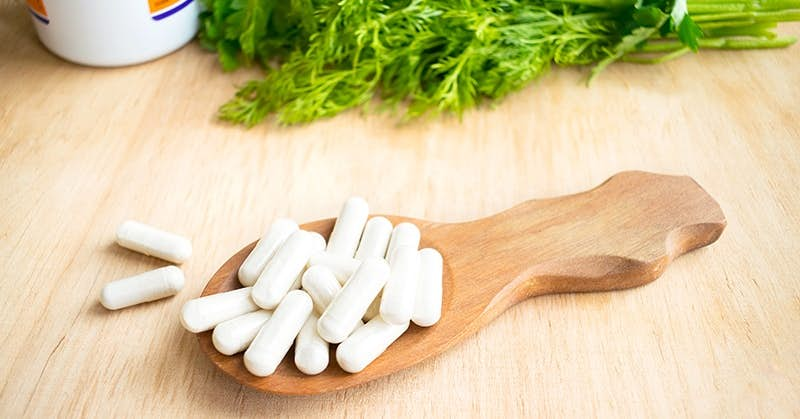If this toxic metal would stay buried in the Earth’s crust, the world would be a much healthier place.
But it won’t. In fact, it’s everywhere, and most people tend to assume it’s harmless. While everyone worries about heavy metals like lead and mercury, this common metal gets almost no attention.
We decided it’s time to raise the alarm about this widespread contaminant. Read on to find out what it is and the best practices for protecting your body from it.
Continued below...
Your Doctor Got it Wrong…
And I’ll Tell You WhyWhen you stop and think about your personal health care, you realize that you MUST stop blindly going along with what you are told by so-called well-meaning doctors or holistic practitioners. Why should you boldly question what the 'experts' tell you? Quite simply it's a matter of life and death! Find out why you need to take the first step now and become health literate. Because, no matter what ailments you may have - whether you have a cold or are facing a life-threatening cancer diagnosis, becoming health literate means that you have the tools and the knowledge to take control of your own health. Discover what 99% of most doctors will never tell you… but Dr. Keith Scott-Mumby shares all of his secret alternative health discoveries, with you. Click here now. |
It doesn’t just come in thin sheets convenient for baking cookies and wrapping leftovers. It’s in your cookware … prescription and over-the-counter drugs … and both processed and organic foods (and their packages).
We inject it into our children to supposedly boost their immune systems. We rub it into our skin daily. We ingest it with every plant or animal product we eat. And we guzzle it down with the tap water we drink—whether it’s fluoridated or not.
It’s been said to be more carcinogenic than mercury … and possibly more toxic to your brain cells than sugar. And the FDA continues to insist it’s perfectly safe.
Worst of all … it’s impossible to avoid (it makes up 8% of the Earth’s crust) … and studies show it accumulates in the body over time.
Foiled again
Previously, I’ve reported the dangers of aluminum build-up in the body. It’s been associated with a number of diseases and disorders, including: - kidney damage and disease …
- osteoporosis because it competes for calcium receptors in the bones …
- and Alzheimer’s disease because of its ability to penetrate the blood-brain barrier, among many others. (Researchers still don’t have conclusive, without-a-doubt proof of the Alzheimer’s link, but more and more evidence is coming in every day.)
|
Of most concern, however, is aluminum’s carcinogenic effect on the body—especially on estrogen-sensitive breast tissue in both women and men.
Aluminum is a xenoestrogen—an “alien hormone” that steals cell receptors and tricks the body into thinking there are high levels of natural estrogen. Among other problems, this greatly increases the risk for breast and ovarian cancers.
Plus, a recent study showed that aluminum is capable of “neoplastic transformation”. That is, it can turn a perfectly healthy cell into a cancerous one by causing stress to the cell and damaging its DNA.1
The non-essential mineral
Aluminum isn’t like the essential minerals our bodies need to function, such as magnesium, potassium, zinc, or iron. Your body has no use for aluminum at all, so it tries to flush as much as possible through the kidneys and urinary tract.But a growing body of literature suggests that despite our body’s best efforts to get rid of it, we take in more aluminum than it can handle.
Researchers estimate that we get 95% of daily intake—between 4-9 mg of aluminum daily—from food alone. And a single application of aluminum-based antiperspirant nets you four micrograms each.2 (I hope you’re not using antiperspirants that contain aluminum. Most health-savvy consumers stopped long ago.)
Combine all that with the fact that the half-life of aluminum in the body is approximately 7 years, and you can see how quickly it all adds up.2
Over time, the excess metal accumulates in the bones, lungs, muscle, organs, and blood, causing more and more damage the longer it stays.
How to reduce aluminum exposure
Even though it’s impossible to avoid trace amounts of aluminum in your daily life, you can avoid excessive exposure that results in long-term accumulation in your body.Here’s how:
- The first free change you can make is to purchase unpackaged foods.
The food packaging industry loves aluminum for its light weight and natural abundance—two criteria that keep costs low, regardless of the consequences to their consumers.Canned food items, soda cans, chip bags, and hundreds of other packages—including apparently “paper” ones—all contain aluminum. - Another cheap switch is to trade aluminum utensils for wood or stainless steel. Avoid aluminum foil and aluminum cookware such as pie tins, cookie sheets, and saucepans.Take it a step further and swap your cookware for cast iron or stainless steel, which don’t leach heavy metals like aluminum or copper, or harmful chemicals like those in Teflon.Some sources say aluminum cookware only leaches “small amounts” into food. But that’s exactly what we’re trying to avoid … because small amounts remain in the body and build up fast.
- Trade antiperspirants containing aluminum for zinc oxide ointment or all-natural Thai crystals.Zinc is a natural anti-bacterial, so it will eliminate odor without reducing the natural process of sweating. Renowned alternative doctor Jonathan Wright endorses the process of applying zinc oxide generously before bed, then washing it off in the morning. This application should last 3 to 14 days—and might even give you a small zinc supplementation!3Or, you can choose to use Thai deodorant crystals, which are completely natural and last up to a year.
- Avoid antacids. Besides being high in aluminum hydroxide, antacids are another enormous scam concocted by Big Pharma. Less than 5% of the population actually has too much stomach acid (a condition called hyperchlorhydria). Antacids are seldom appropriate. If you suffer from poor digestion, the last thing you want to do is lower your stomach acid levels.So forget the Tums. As a natural answer to indigestion, you might find it more effective to drink a glass of almond milk with a teaspoon of flax or chia seeds.And if you take antacids for their calcium content, look out. Aluminum competes with calcium receptors in the body!
- Pay attention to your tea. Black and green teas are notoriously high in aluminum, and the high polyphenol levels in tea increase absorption. One researcher asserted that drinking green tea may double one’s intake of aluminum, with up to 2.5 mg per cup. Another study suggested drinking tea without lemon might reduce absorption.2 I hate to think that green tea, of all things, may pose a health problem, but that’s what some experts say.
- Avoid soy, wheat, and corn—the crops with the highest amounts of aluminum.This recommendation goes along with general natural health wisdom. Most soy and corn crops are genetically modified and should be avoided until long-term studies prove them safe.If you suffer from chronic, never-ending GI tract upset, it’s worth eliminating gluten from your diet for a few months to see if you get relief. Wheat has been proven to cause all kinds of disease and discomfort in the gastrointestinal tract. Plus, GMO wheat is treated with glyphosate, a common herbicide believed to transport aluminum straight to the brain.4Your health will be far better for avoiding these three crops as much as possible.
|
Ways to rid your body of aluminum
Once you’ve reduced your daily exposure as much as possible, you’ll want to cleanse your body from years of accumulated aluminum. Remember, it’s the fact that we play long-term host to this toxic metal that makes it so concerning.Thankfully, there is scientific proof that excess aluminum can be removed, and fairly easily, too.
Here are several natural ways to detox:
- Get enough zinc. Zinc is an essential mineral—important to over 300 identified protein and enzyme processes—and is widely regarded as an important metal for optimal brain function (along with manganese and iron.) A recent animal study from Molecular Neurobiology showed that zinc had the power to reverse aluminum’s oxidative damage on DNA in the brain.5
- Supplement with active vitamin D, called calcitriol. A Colorado State University study showed that young patients with kidney damage who supplemented with oral calcitriol decreased their aluminum levels by an incredible 87%.6 Getting plenty of sunshine also raises your vitamin D levels.
- Fight back with calcium. Aluminum competes with calcium receptors in the bones, causing bones to soften, a condition called osteomalacia. Calcium also helps your intestines block absorption of aluminum. A 1,000 mg supplement of calcium is the general rule of thumb, but you should confirm with your physician to make sure your individual needs are being met.7 Calcium is itself a controversial supplement, so I would not exceed 1000 mg.
|
Beware of products that claim to remove heavy metals from your body. These products often capitalize on the fear of heavy metal toxicity. Be sure to read the ingredients and do your research if a “cleanse” is a route you choose.
You’ve taken the first step to protecting your body from this toxic metal by simply being aware of the pervasiveness of aluminum in modern society. Making the easy, cheap changes I’ve suggested above should help in the long-term … and could significantly reduce your risk of aluminum-caused cancers.
Meanwhile, have you heard about telomeres? Keeping your telomeres long has become a health fad, but is there anything to it? We looked into it and reported in the last issue. If you missed the report, you can catch it now, just click here.
Kindest regards,

Lee Euler, Publisher
ReferencesArticle 1
(1) Aluminium chloride promotes anchorage-independent growth in human mammary epithelial cells. http://www.ncbi.nlm.nih.gov/pubmed/22223356




